Is Denny’s Japan’s new ultra-expensive Amaou strawberry parfait worth it?【Taste test】
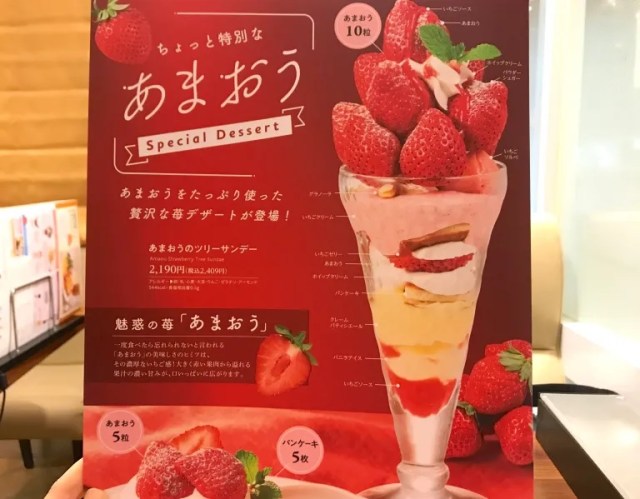
Prized Fukuoka fruit delivers joy to the taste buds, shock to the wallet.
In Japan, the 15th of the month is known to sweets fans as “Strawberry Day,” because when you put the Japanese words for one, ichi, and five, go, together, they sound like ichigo, which means “strawberry.”
Strawberry Day isn’t an officially recognized holiday, but it is a widely accepted excuse to treat yourself to some strawberry desserts, and so our reporter Mariko Ohanabatake took advantage of that opportunity this month to go get a strawberry parfait at Denny’s.
In Japan, places like Denny’s, which would be called coffee shops or diners in the U.S., are called “family restaurants.” Pretty much every family restaurant chain offers a strawberry parfait, usually a simple glass of ice cream with a few strawberry slices and a modest drizzle of fruity sauce. But what had brought Mariko to Denny’s was their new, premium-priced Amaou Tree Sundae. As the name implies, the star ingredient are Amaou strawberries, an extra-delicious, and also extra-expensive, variety grown in Fukuoka Prefecture. Even a single Amaou is considered a delicacy among fruit fans, so imagine Mariko’s joy when she saw that Denny’s gives you 10 of them in the special sundae!
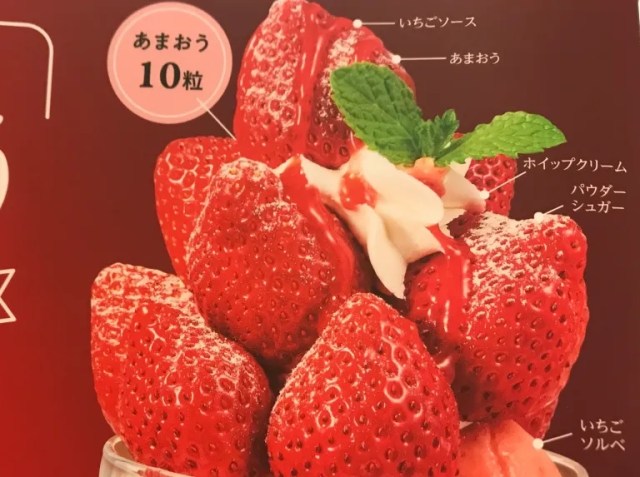
But like we said, Amaou aren’t cheap, and neither is the Amaou Tree Sundae, which is priced at 2,409 yen (US$16.60). That’s a lot for a family restaurant dessert, but Mariko decided to splurge. After all, Strawberry Day comes but once a year, er, month!

Anyway, she wanted it, so as soon as the waiter came by that’s what she ordered. Then she waited…and waited…and waited some more. She watched as customers who’d come in after her received their non-Amaou Tree Sundae food, and still she waited. Granted, the restaurant was crowded, but she couldn’t help thinking it was taking a long time. Maybe the staff was short-handed that day, or maybe it was because…
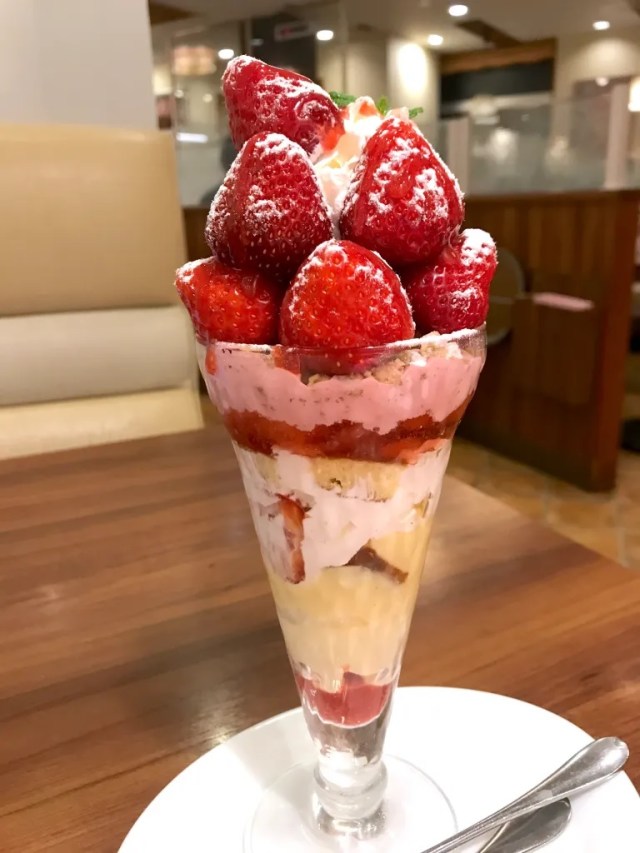
…the Amaou Tree Sundae is massive! It looked more like a mountain than a tree, with the mouthwatering Amaou positioned just right so that they could all fit in the glass without any squishing, while still being a solid enough stack to prevent an Amaou avalanche.

Amaou are so named because of how red (akai), round (marui), big (ookii), and delicious (umai) they are, and you have to admit, it’s a much more appetizing name than “RRBD” would be. The sprinkling of powdered sugar made their crimson color look all the more vivid by comparison, and every single bite of strawberry was like a delivery of happiness to Mariko’s soul via her mouth.
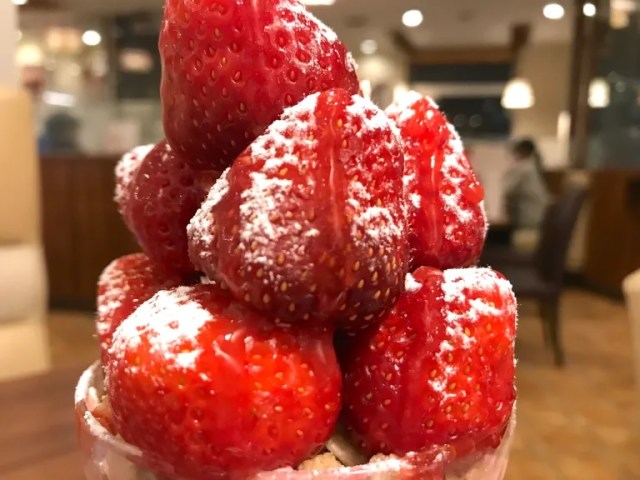
An interesting side effect of the Amaou Tree Sundae’s presentation is that you pretty much have to eat all of the strawberries, one after another, before you can dig down to all the non-strawberry parts of the dessert. So instead of making the difficult decision of how to ration your Amaou throughout the dessert session, you start off by diving completely into indulgent luxury, and Mariko has to admit she found this liberating decadence immensely enjoyable, with the strawberry sauce and whipped cream playing palate-pleasing supporting roles.
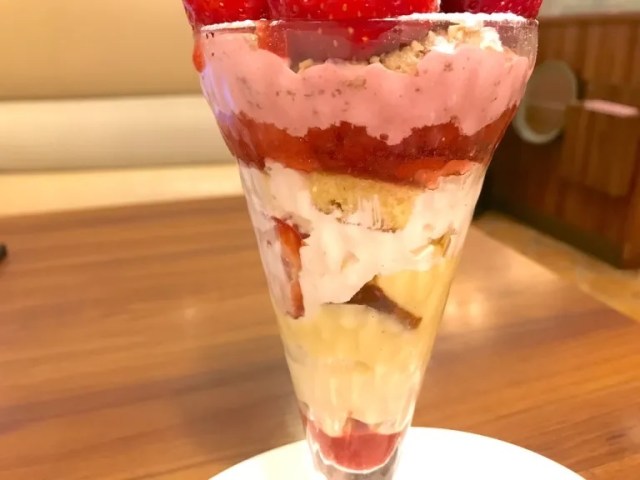
However, after she finished eating all 10 Amaou, her spirits sagged a little. No, it wasn’t because of guilt – Mariko has no regrets about any of the strawberries she ate here, likening the experience of them to a sweet spring breeze. Nor did she have any complaints about the strawberry sorbet, strawberry cream, or crunchy granola bits that sit directly beneath the fruit. No, what bothered her was what came next as she was digging down.
At first glance, you might think you see a layer of sponge cake inside the glass in the above photo. Actually, though, that’s not sponge cake. It’s pancake.
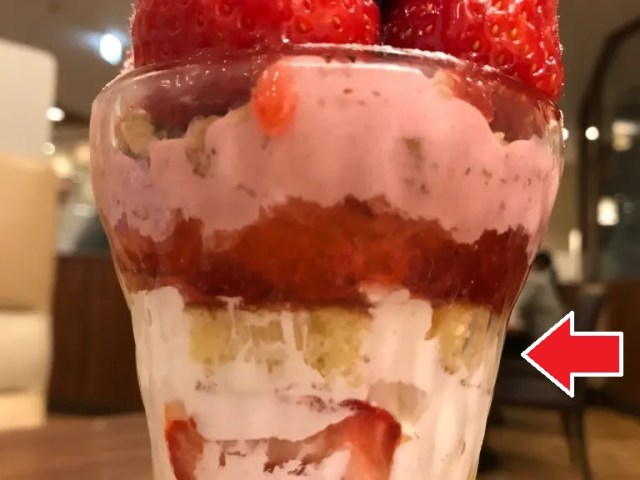
We say “pancake,” not “a pancake,” because it’s more like a strip of shredded pancake than a fully formed mini pancake. This was what Mariko had a problem with. You might be wondering why, especially since most people’s image of restaurant pancakes in Japan are of the dessert kind, piled with chopped fruit, whipped cream, and other sweet accoutrements.
But while sponge cake is common in Japanese parfaits, pancake is pretty much unheard of. The fluffiness sort of reminded Mariko of sponge cake, but it wasn’t quite the same, making the texture feel off to her classically trained parfait sensibilities, and the pancake was also decidedly less sweet than sponge cake. The oddity of eating pancake that’s cold may have also contributed to her disappointment, as did the fact that there are multiple pancake pieces in the glass.

On the plus side, there are a few more Amaou slices waiting deeper down in the glass, plus a perfectly fine custard layer, vanilla ice cream and strawberry sauce at the very bottom.
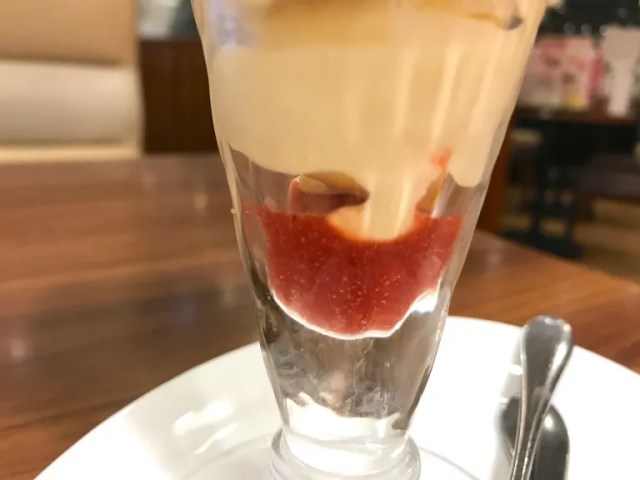

So is the Amaou Tree Sundae worth its price? That probably depends on your ceiling in terms of how much you love strawberries, and also your tolerance for pancake as a parfait ingredient. This many Amaou strawberries, just by themselves, could easily cost you 1,000 yen at a grocery store, so in that sense, the Amaou Tree Sundae isn’t a bad value, but Mariko personally finds the inclusion of pancake unforgivable, and is keeping her fingers crossed that Denny’s will one day decide to replace it with more conventional sponge cake, even if they have to make the Amaou Tree Sundae even more expensive in the process.
Photos ©SoraNews24
● Want to hear about SoraNews24’s latest articles as soon as they’re published? Follow us on Facebook and Twitter!
Credit:

0 comments:
Post a Comment